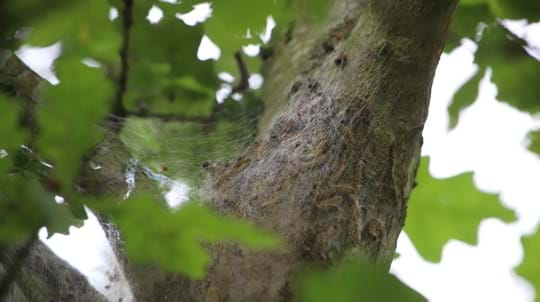
Pests and diseases
What are we looking out for?
The pests and diseases we are most keen to hear about.

BGCI
Botanic Gardens Conservation International (BGCI) is an organisation dedicated to mobilising botanic gardens for the sake of global plant conservation. With over 600 members, it serves to empower institutions in connecting, sharing resources, researching and protecting threatened plants. Our databases provide ways for gardens around the world to share resources whilst accreditation sets standards to help build confidence and trust in the material exchanged. Specially-designed training modules and workshops build capacity and aid institutions in meeting national and international environmental commitments. Focused consortia and information contribution, to the International Union for Conservation of Nature’s Red List, allow conservation activities to be focused where they are needed most. In partnership with gardens and other conservation organisations, we support on-the-ground projects all over the world. And then there’s the International Plant Sentinel Network, which is where I come in.
Those with an interest in Observatree may be familiar with the plant sentinel concept: a plant growing outside its natural range is monitored to identify the presence, and evaluate the impact, of novel or emerging pests and pathogens, thereby acting as an alert system against these threats. Because there are eyes on that plant, any symptoms are picked up quickly and reported as soon as they appear. These reports can be tracked geographically, chronologically and across species, providing valuable information on pest or pathogen spread and plant susceptibility to them. The International Plant Sentinel Network (IPSN) applies this concept to plants in botanic gardens and arboreta located all over the world. Like Observatree, the IPSN utilises existing plants and surveyors with specialist knowledge to monitor plant pests but, rather than thoroughly covering a nation-sized area, we spread efforts across international boundaries. Botanic gardens include one third of the world’s known plant species and often hold examples of plants from other countries. By monitoring native species kept abroad, the IPSN can follow the global spread of plant threats and discover new vulnerabilities to pathogens or pests which could prove perilous should they reach those plants’ natural ranges.
One of the IPSN’s great successes is the Plant Health Checker, a unique tool developed for botanic gardens to broadly monitor the general health of plant species and detect the emergence of pests or diseases in host species of interest. Through DEFRA’s funding, these general surveys are being used to monitor British tree species in Australia and New Zealand for as-yet-undetected threats. The US Forest Service is similarly funding an IPSN project surveying American trees in Polish collections, with efforts set to include Chilean and Argentinian gardens soon. Meanwhile, focused surveys are recording key dangers like rose rosette virus and beech leaf disease. The IPSN also provides special training in the recognition and trapping of plant pests through courses, workshops and a range of other resources available on the IPSN website. Through these programs, the infamous emerald ash borer is being tracked across Ukraine into eastern Europe from garden to garden, while the detection of ash dieback on new tree hosts is raising concerns. While these findings are troubling, they demonstrate this sentinel network’s value for providing early detection of pests or pathogens. It can even flag up more tolerant, and perhaps resistant species or populations, helping implement mitigation measures for the plant conservation fight.
The IPSN, then, is emerging as a great tool to detect and combat plant health threats around the world. And all through a global network of botanic gardens, a ready-made alliance now mobilised to tackle one of the great threats to biodiversity and help safeguard our dazzling plant diversity for the future.